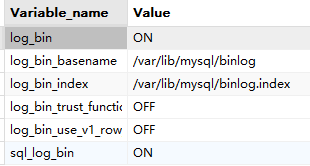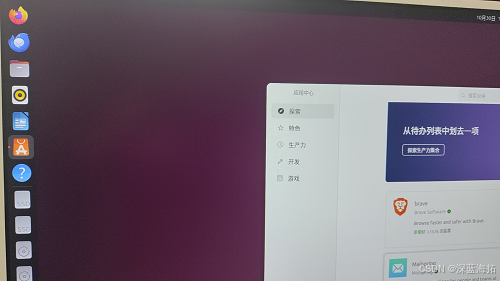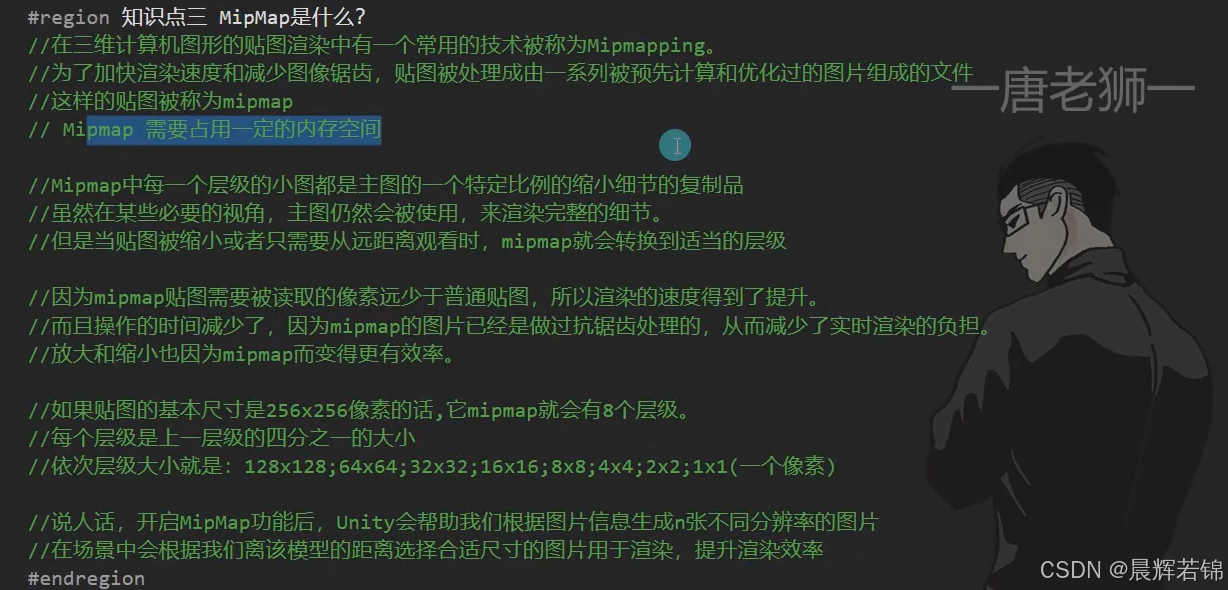
前提条件:先了解集群搭建流程是什么样,需要改哪些配置,有哪些环境,这个文章目的是简化部署。
clickhouse运维篇(一):docker-compose 快速部署clickhouse集群
clickhouse运维篇(二):多机器手动部署ck集群
!https://i-blog.csdnimg.cn/direct/7677be0676904a7687c2f4cc8aef0a46.png
项目目录解析:
$ tree .
.
├── cluster.conf #集群配置, 集群包含哪些机器、端口分别为多少
├── config
│ ├── config_node1.xml # 生成的ck节点配置文件
│ ├── config_node2.xml
│ ├── config_template.xml # config模版
│ ├── users_node1.xml # 生成的ck节点用户配置文件
│ ├── users_node2.xml
│ └── users_template.xml # users模版
├── dep #下面包含需要的远程依赖, zookeeper、clickhouse、jdk,根据自己的需求更改
├── gen_cluster_config.sh
├── gen_login_cmd.sh
├── install.conf # 远程登录的主机conf,需要在跳板机或者中间机器上去ssh、scp使用
└── main.sh #启动入口
1、main.sh
CUR_FOLDER=$(cd "/Users/admin/scripts/my_app/ckcluster";pwd)
. ${CUR_FOLDER}/cluster.conf
. ${CUR_FOLDER}/gen_cluster_config.sh
. ${CUR_FOLDER}/gen_login_cmd.sh
CONFIG_FOLDER="${CUR_FOLDER}/config"
DEP_FOLDER="${CUR_FOLDER}/dep"
TEMPLATE_FILE="${CONFIG_FOLDER}/config_template.xml"
if [ ! -d "$CONFIG_FOLDER" ]; then
mkdir -p "$CONFIG_FOLDER"
fi
if [ ! -d "$DEP_FOLDER" ]; then
mkdir -p "$DEP_FOLDER"
fi
zk_index=1
# 首先读取所有节点信息并根据 shard 进行分组
while true; do
host_var="zk_node_${zk_index}_host"
# 检查所有变量是否为空,若有一个为空则跳出循环
if [ -z "${!host_var}" ]; then
break
fi
# 远程安装jdk、zookeeper
install_path=$(get_install_path ${!host_var})
echo $(get_scp_command ${!host_var} . "${DEP_FOLDER}/jdk-8u202-nonroot.tar.gz ${DEP_FOLDER}/apache-zookeeper-3.7.2-bin.tar.gz")
`get_scp_command ${!host_var} . "${DEP_FOLDER}/jdk-8u202-nonroot.tar.gz ${DEP_FOLDER}/apache-zookeeper-3.7.2-bin.tar.gz"`
echo $(get_ssh_command ${!host_var} "cd ${install_path};tar -xzvf ${install_path}/jdk-8u202-nonroot.tar.gz")
echo $(get_ssh_command ${!host_var} "cd ${install_path};tar -xzvf ${install_path}/apache-zookeeper-3.7.2-bin.tar.gz")
`get_ssh_command ${!host_var} "cd ${install_path};tar -xzvf ${install_path}/jdk-8u202-nonroot.tar.gz"`
`get_ssh_command ${!host_var} "cd ${install_path};tar -xzvf ${install_path}/apache-zookeeper-3.7.2-bin.tar.gz"`
zk_index=$((zk_index + 1))
done
# 生成ck集群配置文件
gen_config
# 远程安装clickhouse
ck_index=1
# 首先读取所有节点信息并根据 shard 进行分组
while true; do
host_var="ck_node_${ck_index}_host"
# 检查所有变量是否为空,若有一个为空则跳出循环
if [ -z "${!host_var}" ]; then
break
fi
# <users_config>/opt/appaduudit/my_app-2.4/clickhouse-23.4.2.9/ck_node_1/config/users_node.xml</users_config>
install_path=$(get_install_path ${!host_var})
`get_scp_command ${!host_var} . "${DEP_FOLDER}/clickhouse-23.4.2.9.tar.gz"`
echo $(get_ssh_command ${!host_var} "cd ${install_path};tar -xzvf ${install_path}/clickhouse-23.4.2.9.tar.gz")
NODE_CK_PATH="${BASE_CK_PATH}/ck_node_${ck_index}"
echo $(get_scp_command ${!host_var} ${NODE_CK_PATH}/config "${CONFIG_FOLDER}/user_node${ck_index}.xml")
`get_scp_command ${!host_var} ${NODE_CK_PATH}/config "${CONFIG_FOLDER}/config_node${ck_index}.xml"`
`get_scp_command ${!host_var} ${NODE_CK_PATH}/config "${CONFIG_FOLDER}/users_node${ck_index}.xml"`
echo $(get_ssh_command ${!host_var} "${install_path}/clickhouse-23.4.2.9.tar.gz/bin/clickhouse server --config-file ${install_path}/config_node${ck_index}.xml")
`get_ssh_command ${!host_var} "${install_path}/clickhouse-23.4.2.9.tar.gz/bin/clickhouse server --config-file ${install_path}/config_node${ck_index}.xml"`
ck_index=$((ck_index + 1))
done
2、cluster.conf
# 定义变量
target_install_path="/opt/app/ck_cluster"
BASE_CK_PATH="/opt/app/my_app-2.4/clickhouse-23.4.2.9"
CK_CLUSTER_NAME="my_ck_cluster_test"
#port为zk的clientPort
zk_node_1_host=172.168.1.206
zk_node_1_port=8551
zk_node_2_host=172.168.1.207
zk_node_2_port=8551
zk_node_3_host=172.168.1.208
zk_node_3_port=8551
ck_node_1_host=172.168.1.206
ck_node_1_tcp_port=8601
ck_node_1_http_port=8602
ck_node_1_interserver_http_port=8603
ck_node_1_user=default
ck_node_1_password=password
ck_node_1_shard=01
ck_node_1_replica=replica_63
ck_node_2_host=172.168.1.207
ck_node_2_tcp_port=8611
ck_node_2_http_port=8612
ck_node_2_interserver_http_port=8613
ck_node_2_user=default
ck_node_2_password=password
ck_node_2_shard=02
ck_node_2_replica=replica_63
#ck_node_3_host=ck_host_3
#ck_node_3_tcp_port=ck_tcp_port_3
#ck_node_3_http_port=ck_http_port_3
#ck_node_3_interserver_http_port=ck_interserver_http_port_3
#ck_node_3_user=user3
#ck_node_3_password=password3
#ck_node_3_shard=02
#ck_node_3_replica=replica_209
3、install.conf
ssh.172.168.1.206=root:app:/opt/app/ck_cluste
ssh.172.168.1.207=admin:adminpass:/opt/app/ck_cluste
ssh.172.168.1.208=admin:adminpass:/opt/app/ck_cluste
4、gen_login_cmd.sh
#!/bin/bash
cd /Users/admin/scripts/my_app/ckcluster
# 读取配置文件并解析
CONFIG_FILE="install.conf"
declare -A HOSTS
while IFS='=' read -r key user_password || [[ -n "$key" ]]; do
key=$(echo "$key" | xargs)
user_password=$(echo "$user_password" | xargs)
if [[ $key == ssh.* ]]; then
host=${key#ssh.}
HOSTS["$host"]="$user_password"
fi
done < "$CONFIG_FILE"
# 获取 SSH 命令
get_ssh_command() {
local host=$1
local cmd=$2
local user_password=${HOSTS["$host"]}
IFS=':' read -r user password install_path<<< "$user_password"
# echo "sshpass -p '$password' ssh $user@$host $cmd"
echo "sshpass -p '$password' ssh $user@$host \"$cmd\""
}
# 获取 SCP 命令
get_scp_command() {
local host=$1
local extra_dir=$2
local files=$3
local user_password=${HOSTS[$host]}
# root:idss:/opt/idss/ck_cluste
IFS=':' read -r user password install_path<<< "$user_password"
if [ "$extra_dir" != "." ]; then
install_path=$extra_dir
fi
mkdir_cmd=$(get_ssh_command $host "mkdir -p $install_path")
eval "$mkdir_cmd"
echo "sshpass -p '$password' scp -r $files $user@$host:$install_path"
}
get_install_path() {
local host=$1
local user_password=${HOSTS[$host]}
# root:idss:/opt/idss/ck_cluste
IFS=':' read -r user password install_path<<< "$user_password"
echo $install_path
}
# ssh_command=$(get_scp_command "10.87.102.206" "/Users/admin/scripts/my_app/ckcluster/dep/jdk-8u202-nonroot.tar.gz /Users/admin/scripts/my_app/ckcluster/dep/apache-zookeeper-3.7.2-bin.tar.gz")
# echo $ssh_command
# scp_command=$(get_ssh_command "10.87.102.206" "ls /opt/idss/ck_cluste")
# echo $scp_command
# `$scp_command`
5、gen_cluster_config.sh
#!/bin/bash
# 定义基础路径和模板文件名
function gen_config() {
# 生成 zookeeper 配置
ZOOKEEPER_CONFIG="<zookeeper>\n"
# 循环遍历 zk_node_*_host 和 zk_node_*_port 变量
zk_index=1
while true; do
host_var="zk_node_${zk_index}_host"
port_var="zk_node_${zk_index}_port"
# 检查变量是否已定义,如果未定义则跳出循环
if [ -z "${!host_var}" ] || [ -z "${!port_var}" ]; then
break
fi
ZOOKEEPER_CONFIG+=" <node index=\"${zk_index}\">\n"
ZOOKEEPER_CONFIG+=" <host>${!host_var}</host>\n"
ZOOKEEPER_CONFIG+=" <port>${!port_var}</port>\n"
ZOOKEEPER_CONFIG+=" </node>\n"
zk_index=$((zk_index + 1))
done
ZOOKEEPER_CONFIG+="</zookeeper>"
# 生成 remote_servers 配置
declare -A shard_nodes config_content
ck_index=1
# 首先读取所有节点信息并根据 shard 进行分组
while true; do
host_var="ck_node_${ck_index}_host"
tcp_port_var="ck_node_${ck_index}_tcp_port"
http_port_var="ck_node_${ck_index}_http_port"
interserver_port_var="ck_node_${ck_index}_interserver_http_port"
user_var="ck_node_${ck_index}_user"
password_var="ck_node_${ck_index}_password"
shard_var="ck_node_${ck_index}_shard"
replica_var="ck_node_${ck_index}_replica"
# 检查所有变量是否为空,若有一个为空则跳出循环
if [ -z "${!host_var}" ] || \
[ -z "${!tcp_port_var}" ] || \
[ -z "${!http_port_var}" ] || \
[ -z "${!interserver_port_var}" ] || \
[ -z "${!user_var}" ] || \
[ -z "${!password_var}" ] || \
[ -z "${!shard_var}" ] || \
[ -z "${!replica_var}" ]; then
break
fi
# 将当前节点信息存入以 shard 为 key 的数组
shard_nodes["${!shard_var}"]+=$(cat <<-NODE
<replica>
<host>${!host_var}</host>
<port>${!tcp_port_var}</port>
<user>${!user_var}</user>
<password>${!password_var}</password>
</replica>\n
NODE
)
NODE_CK_PATH="${BASE_CK_PATH}/ck_node_${ck_index}"
config_template=$(cat ${CONFIG_FOLDER}/config_template.xml)
config_template=$(echo "$config_template" | sed "s|\${BASE_CK_PATH}|${NODE_CK_PATH}|g")
config_template=$(echo "$config_template" | sed "s|\${HTTP_PORT}|${!http_port_var}|g")
config_template=$(echo "$config_template" | sed "s|\${TCP_PORT}|${!tcp_port_var}|g")
config_template=$(echo "$config_template" | sed "s|\${INTERSERVER_HTTP_PORT}|${!interserver_port_var}|g")
config_template=$(echo "$config_template" | sed "s|\${MACROS_SHARD}|${!shard_var}|g")
config_template=$(echo "$config_template" | sed "s|\${MACROS_REPLICA}|${!replica_var}|g")
config_template=$(echo "$config_template" | sed "s|\${CK_PASSWORD}|${!password_var}|g")
config_template=$(echo "$config_template" | sed "s|\${ck_index}|${!ck_index}|g")
# 将生成的配置内容存入字典
config_content["config_node${ck_index}"]="$config_template"
# users文件生成
users_template=$(cat ${CONFIG_FOLDER}/users_template.xml)
users_template=$(echo "$users_template" | sed "s|\${CK_PASSWORD}|${!password_var}|g")
echo -e "$users_template" > "${CONFIG_FOLDER}/users_node${ck_index}.xml"
ck_index=$((ck_index + 1))
done
# 构建最终的 XML 配置
REMOTE_SERVERS_CONFIG="<remote_servers>\n"
REMOTE_SERVERS_CONFIG+=" <${CK_CLUSTER_NAME}>\n"
for shard in "${!shard_nodes[@]}"; do
REMOTE_SERVERS_CONFIG+=" <shard>\n"
REMOTE_SERVERS_CONFIG+=" <internal_replication>true</internal_replication> \n"
REMOTE_SERVERS_CONFIG+="${shard_nodes[$shard]}"
REMOTE_SERVERS_CONFIG+=" </shard>\n"
done
REMOTE_SERVERS_CONFIG+=" </${CK_CLUSTER_NAME}>\n"
REMOTE_SERVERS_CONFIG+="</remote_servers>"
# 动态修改配置文件(插入 Zookeeper\CK集群 配置)
for node_config in "${!config_content[@]}"; do
echo "处理 $node_config ..."
# 创建临时文件
temp_file="${node_config}_tmp.xml"
echo -e "${config_content[$node_config]}" > "$temp_file"
sed -i '' '/<\/yandex>/d' "$temp_file"
# linux下为
# sed -i '/<\/yandex>/d' "$temp_file"
# 拼接 Zookeeper 和 Remote Servers 配置
combined_insert="${ZOOKEEPER_CONFIG}
${REMOTE_SERVERS_CONFIG}"
echo -e "$combined_insert" >> "$temp_file"
echo "</yandex>" >> "$temp_file"
mv "$temp_file" "$CONFIG_FOLDER/${node_config}.xml"
echo "生成 $node_config 完成: ${node_config}.xml"
done
}
6、config_template.xml
<?xml version="1.0"?>
<yandex>
<logger>
<level>notice</level>
<log>${BASE_CK_PATH}/log/clickhouse-server.log</log>
<errorlog>${BASE_CK_PATH}/log/clickhouse-server.err.log</errorlog>
<size>1000M</size>
<count>10</count>
</logger>
<path>${BASE_CK_PATH}/data/</path>
<tmp_path>${BASE_CK_PATH}/tmp/</tmp_path>
<user_files_path>${BASE_CK_PATH}/data/user_files/</user_files_path>
<users_config>${BASE_CK_PATH}/config/users_node${ck_index}.xml</users_config>
<users>
<default>
<password>${CK_PASSWORD}</password> <!-- 空密码 -->
<networks>
<ip>::/0</ip> <!-- 允许所有IP访问 -->
</networks>
<profile>default</profile>
<quota>default</quota>
<access_management>1</access_management>
</default>
</users>
<default_profile>default</default_profile>
<default_database>default</default_database>
<http>
<port>${HTTP_PORT}</port>
<max_connections>1024</max_connections>
<async_insert>1</async_insert>
</http>
<listen_host>0.0.0.0</listen_host>
<listen_host>::</listen_host>
<http_port>${HTTP_PORT}</http_port>
<tcp_port>${TCP_PORT}</tcp_port>
<interserver_http_port>${INTERSERVER_HTTP_PORT}</interserver_http_port>
<distributed_ddl>
<!-- Path in ZooKeeper to queue with DDL queries -->
<path>/clickhouse/task_queue/ddl</path>
</distributed_ddl>
<macros>
<shard>${MACROS_SHARD}</shard>
<replica>${MACROS_REPLICA}</replica>
</macros>
</yandex>
7、users_template.xml
<?xml version="1.0"?>
<yandex>
<!-- Profiles of settings. -->
<profiles>
<!-- Default settings. -->
<default>
<!-- Maximum memory usage for processing single query, in bytes. -->
<max_memory_usage>10000000000</max_memory_usage>
<load_balancing>random</load_balancing>
</default>
<!-- Profile that allows only read queries. -->
<readonly>
<readonly>1</readonly>
</readonly>
</profiles>
<users>
<default>
<password>${CK_PASSWORD}</password>
<networks>
<ip>::/0</ip> <!-- 允许所有IP访问 -->
</networks>
<profile>default</profile>
<quota>default</quota>
<access_management>1</access_management>
</default>
</users>
<!-- Quotas. -->
<quotas>
<!-- Name of quota. -->
<default>
<!-- Limits for time interval. You could specify many intervals with different limits. -->
<interval>
<!-- Length of interval. -->
<duration>3600</duration>
<distributed_product_mode>allow</distributed_product_mode>
<!-- No limits. Just calculate resource usage for time interval. -->
<queries>0</queries>
<errors>0</errors>
<result_rows>0</result_rows>
<read_rows>0</read_rows>
<execution_time>0</execution_time>
</interval>
</default>
</quotas>
</yandex>



![[SAP ABAP] SMW0上传模板](https://i-blog.csdnimg.cn/direct/b1fb02d0d4864147ba67dd46ea6d81c4.png)














![[项目] C++基于多设计模式下的同步异步日志系统](https://i-blog.csdnimg.cn/direct/f023ef9ab4244d04a64a1558ad798ee4.png)
